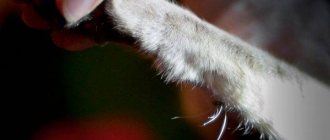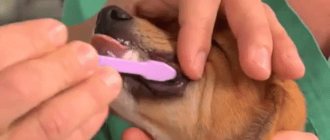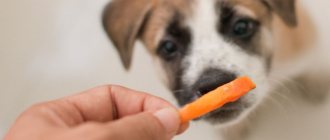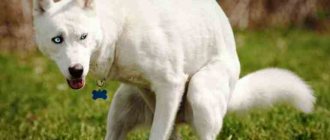It is generally accepted that dogs have six primary senses: taste, smell, vision, hearing, balance and touch. With the first five, everything is more or less clear: the eyes are responsible for vision, the ears are responsible for hearing, the nose is responsible for smell, and the vestibular apparatus is responsible for balance. But the senses of touch in dogs and humans are very different.
If you look closely at the dog, you can see thickened hairs on its head. They are located above the eyes, on the cheeks, on the lips, and also in the corners of the mouth. To understand why a dog needs a mustache on its face, you should turn to biology.
What are vibrissae and how do they work?
In the language of science, dog whiskers are called “vibrissae”. They are very sensitive hairs. In cats, for example, the difference between the hairs of the fur and the whiskers is quite obvious and striking, but the dog's whiskers are much shorter and softer. Nevertheless, they have one purpose: they are an organ of touch, that is, with their help, a dog, like a cat, orients itself in space, determines the size of objects next to it, and feels the strength and speed of the wind. In general, they help the animal to better perceive the world around it.
Whisker follicles - sensitive hairs - are a complex of mechanoreceptors. Simply put, they are surrounded by tens of thousands of nerve endings that perceive mechanical irritation and send corresponding signals to the dog’s brain.
In fact, sensitive hairs are located not only on the animal’s face, but throughout the body. However, it is not customary to classify them as vibrissae. However, it is worth noting that such thickened hairs have many more nerve endings in the follicle and are the first to respond to external stimuli.
Subscribe to the newsletter and get a discount at the pet store “Lubimchik”
Thanks for subscribing!
Why do dogs need whiskers?
Every responsible owner should know whether it is still possible to trim a dog’s mustache and why it is needed. Dogs, like humans, have five senses:
- Vision – eyes;
- Sense of smell – nose;
- Hearing – ears;
- Taste is the tongue;
- Touch - wool.
The sixth sense organ is different from the human one. Taking a closer look at your pet, you can see dense hair on its head, unlike other fur. Hairs grow all over the face: on the cheeks, above the eyes, in the corners of the mouth. So think about how much it costs to trim your mustache.
What are vibrissae
The whiskers located on the dog's face are scientifically called vibrissae. They are highly sensitive. In feline representatives the vibrissae are clearly visible. Their fur is much shorter than their antennae. In dogs they are not so pronounced, they are softer and shorter. However, the functions perform the same. Therefore, cutting the mustache of dogs is not recommended.
Dogs' whiskers are organs of touch, modified receptors that, like cats, help navigate. For example, distinguish the location of things in space, distinguish large objects from small ones, determine the distance to a necessary object, feel the speed of the wind. Thanks to them, the pet moves more freely and understands the environment more easily.
How do vibrissae function?
Vibrissae follicles are a system of mechanoreceptors. They have many nerve endings. When interacting with the outside world, nerve endings send a signal to the brain, providing information necessary for movement. Therefore, owners who cut the mustaches of their four-legged friends deprive them of their usefulness.
Thickened hairs are found throughout the body, but vibrissae include only those that grow on the face. Sensitive, thick hair on the body also has nerve endings that react when touched. Therefore, the pet raises its fur when you stroke it, thus responding to irritation.
Is it possible to trim a dog's whiskers?
Sometimes dog owners, out of ignorance or based on their own taste preferences, ask the groomer to trim their pet's mustache. This can only be explained by the fact that such owners simply don’t know why dogs need mustaches, otherwise they certainly wouldn’t do it.
Dogs left without whiskers partially lose orientation in space. The signal from the vibrissae becomes erroneous or stops reaching the brain altogether.
Because of this, very often dogs become nervous and irritable, and they may experience more frequent attacks of aggression. The loss of whiskers is especially dangerous for older pets, whose sense of smell and hearing are already dulled, and whose central nervous system often fails.
Today, the health of the animal is put in first place, and, for example, at exhibitions there is an increasing ban on trimming animal whiskers.
My dog's whiskers are falling out - why and what to do?
If a dog's whiskers begin to fall out, the owner naturally asks why this is happening and what to do in this case. In fact, it all depends on how intensely it happens. If your dog has broken off several whiskers, there is most likely no reason to worry. But in the case when almost the entire face of the animal is bald, it is worth taking appropriate measures.
Why do you think a dog needs a mustache at all? Surely not in order to order a corporate cake with an important person or show off a lush mustache in front of females.











